Who are the Irish Travellers in the US?
They're one of ireland's oldest and most marginalized minorities but who are the irish travellers in the us.
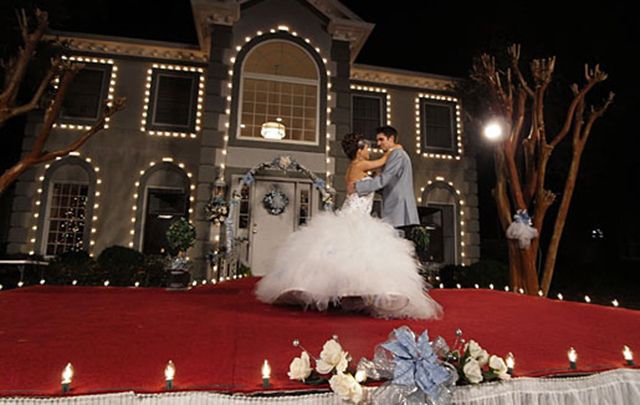
One of Ireland's oldest and most marginalized minorities but how much to do you know about Irish Travellers in America?
In Ireland, nearly everybody is aware of the existence of the Irish Travellers — they’re one of Ireland’s oldest and most marginalized minority groups, known for their itinerant lifestyle, distinct dialects and oft-questioned traditions.
However, many people know that there are also communities of Irish Travellers in America.
A few times each year, a headline will pop up about Irish Travellers in the US. Sometimes it’ll be from a local newspaper in South Carolina or Texas; on rarer occasions, such as the bust of a high-profile rhinoceros horn smuggling ring, it’ll be in Bloomberg Businessweek . Except for the occasional story expressing interest in the culture or history of the Travellers, the articles are typically from the crime section — detailing a theft or scam, or local concern that the Travellers have arrived in the area.
But if you don’t happen to live in those areas or catch those headlines, and if you missed out on that one famous episode of "My Big Fat Gypsy Wedding," you’d be easily forgiven for not having any idea that the Irish Travellers have lived in the US for generations. They’re not recognized as a distinct ethnic group by the US Census, and, what’s more, Irish Americans have never claimed them under the umbrella of the Irish diaspora.
What little we do know about the Irish Travellers here in America comes from those very news articles, and from a scant number of books and documentaries.
There are believed to be anywhere from 7,000 to 40,000 Irish Travellers in the US, though most estimates lie closer to the 10,000 mark. The Travellers here descended from groups who left Ireland around the time of the Great Hunger and settled in the US, carving out a similar lifestyle to the one they followed in Ireland.
Like their counterparts in Ireland, Irish Travellers in the US speak their own dialects of Cant, Shelta, or Gammon, which can include elements of Irish, Gaelic, English, Greek, and Hebrew.
Also similar to their Ireland-based counterparts, the American Irish Travellers identify as strictly Catholic and adhere to their own traditions and mores. The men travel and work and the women raise the children. Many of the women are promised to their future husbands in arranged marriages when they are very young.
Their primary trade is repair work, often categorized as dubious in nature (though the fairness of that generalization has been called into question). But the US Irish Travellers have also, over the years, amassed fortunes through a unique internal economy based on life insurance policies.
As Paul Connolly, who made a documentary about Irish Travellers in the US for the Irish channel TV3 in 2013, told The Journal : “Most of the income comes from insurance. . . In America, there’s a clause which allows you to insure anyone with a blood connection — and as they have intermarried for generations, there’s a likelihood there will be a blood connection.
"So they’ve worked out a way of profiting from this, and that, according to the Travellers I’ve spoken to, is how they make their money and how they’re so wealthy. Some of the more morbid characters we came across referred to it as ‘Death Watch’.”
Perhaps the most notorious instance of this system gone awry took place in 2015, when Anita Fox, a 69-year-old Irish Traveller woman in Texas, was found stabbed to death. Police later identified the perpetrators as Gerard and Bernard Gorman, who held a $1 million life insurance policy in Fox’s name.
There are Irish Traveller enclaves in Texas, in the Houston and Fort Worth areas, as well as in South Carolina, Tennessee, Georgia, Arkansas, Mississippi, and Florida, with smaller settlements found in rural New York, New Jersey, Pennsylvania, and Delaware. Many of the groups identify based on where in the US their ancestors first based themselves, such as the Ohio Travellers, Georgia Travellers, Texas Travellers, and Mississippi Travellers.
The largest-known Irish Traveller community in the US is in Murphy Village, South Carolina, which, as noted in a report by the Florida Ancient Order of Hibernians, is home to approximately 1,500 people with only 11 different surnames.
According to a 2002 article in the Washington Post , “The Irish Travelers who settled in the United States in the 19th century migrated to different parts of the country and established their own clan groups, often with little intermingling across regions.
“The Sherlocks, O'Haras and others settled [in Murphy Village] in the 1960s, on land around a Catholic church whose pastor, the Rev. Joseph Murphy, became the patron and namesake of the growing community just outside the town of North Augusta.”
Far from a caravan or mobile home community, Murphy Village has become home to an increasing number of suburban “McMansions” in recent decades, as the US Irish Travellers build permanent homes, which they use as a base between travels and for holidays. In this regard, its closest Irish counterpart is Rathkeale, Co. Limerick, which was the subject of a New York Times story in 2012 , chronicling the massive homecoming that takes place every Christmas.
“The Riches,” a serial drama about a contemporary Irish Traveller family in the US, starring Eddie Izzard and Minnie Driver, aired on FX for two seasons, in 2007 and 2008.
H/T Slate , The Journal , The Washington Post , Florida AOH .
* Originally published in Sept 2016.
Sign up to IrishCentral's newsletter to stay up-to-date with everything Irish!
Related: Immigration


Celtic Thunder sets sail on ODYSSEY: A North American Tour, tickets on sale next week

50 beautiful Irish girls names and their meanings

US leprechauns versus Irish fairies - a St. Patrick’s Day death match

LAST CHANCE: Win a VIP trip to the largest Irish music festival, Milwaukee Irish Fest!
The best places in Ireland to go for a fishing vacation
Faces of the Titanic: John Horgan, lost at sea, remains a mystery man
There’s good reason why Wexford is known as the "Sunny Southeast"
Ireland's top modern golf clubs, ranked by the experts
The untold story of donations made during Ireland's Great Hunger
Ireland's largest sporting body supports call for ceasefire in Gaza
WATCH: Thin Lizzy (finally) releases "Whiskey in the Jar" official music video
Ireland’s travel secrets: The Slieve League Cliffs, Co Donegal
The Irish Traveller community of Murphy Village, South Carolina, USA
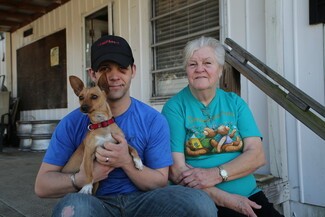
Photo journalist Elisabeth Blanchet talks to Mike Carroll, an Irish Traveller from Murphy Village, South Carolina, USA, a community of around 2,000 Travellers of Irish descent who settled in Aiken County near Augusta, Georgia, in the early 1960's. Carroll is the author of the self-published book Irish Travellers: An undocumented Journey Through History and gives Travellers’ Times an exclusive insight of the every day life and the history of his people and community.
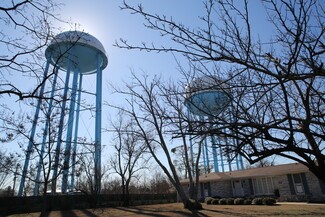
Elisabeth Blanchet: Could you sum up in a few words the history of your family, where they come from, how they arrived in the USA and in Murphy Village?
Mike Carroll: My people were once a settle clan who lived in a quiet, peaceful community before becoming a nomadic subculture in Irish society. A people forced to split up into eleven groups and travel the emerald-green hills in search of work to support their families. A chance encounter between a Protestant landowner and a young Traveller forever changed my forefathers’ destiny and took them from their ancestral home to Holland and eventually America.
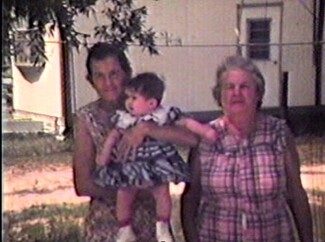
When my forefathers arrived in America, they found life in the colonies closely resembled life in Ireland. Because of their inability to find stable employment, our clan returned to an itinerant lifestyle and travelled throughout the southeastern United States for many decades. During their travels, they often set up camp in an area known as "The Pines" in the small community of Belvedere, South Carolina. It is here where they met and befriended a Roman Catholic priest named Father Joseph John Murphy. He convinced my people to purchase land adjacent Saint Edward the Confessor Catholic Church to provide a stable home for the women and children of our group.
Murphy Village, in the beginning, was a wooded area adjacent a Roman-Catholic church (Saint Edward the Confessor) located a short distance from the Aiken County border in Edgefield County, South Carolina. My family migrated to “The Camp” from Brays Hill a geographic area located in Athens, Georgia. My family's migration to what was then called "The Camp" later called Murphy Village was encouraged by my grandfather, Barney B. Gorman.
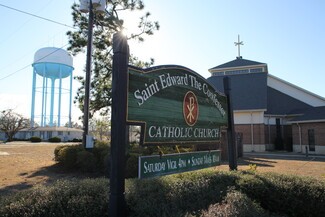
EB: Can you tell us about your childhood and teenage years at Murphy Village?
MC: My parents feared the outside world and the malice that lurked just beyond the borders of our encampment. Most of the faculty and students at my school made it very clear that I was unwelcome and saw my attendance as a waste of school resources. As a young child, I was always surrounded by family and played with cousins who lived only a few steps away from my front door. A four-corner tree in our front yard where grandfather would tell stories about the history of our people, their struggles in America, and our ancestral home, Castlerea. I would often lay back on the freshly cut grass, close my eyes, and imagine the beauty of the gently sloping emerald-green hills of Ireland, often finding myself longing for a place I had never seen and a home I had never known.
Growing up as an Irish-American Traveller in the southeastern United States was difficult and presented many challenges. Our customs and traditions were very different from those of the local community, a community steeped in southern ideals. A culture depicted by a lady drinking lemonade as she watches the African slaves joyfully work in fields for the betterment of their master. A place that called its minority African population “Niggers,” Hispanic population “wetbacks,” and Irish population “Gypsies.” It was during this time I realised that my people lived as if the outside world did not exist.
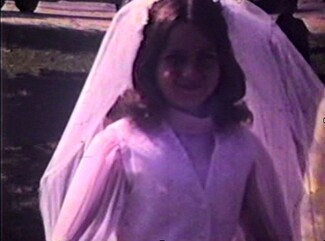
EB: Can you describe Irish-American Travellers’s traditions? Are they still important to the community?
MC: Irish-American Travellers cherish their traditions that have been passed down from generation to generation for hundreds of years. Forbidding sexual relations between a man and a woman before marriage. The importance of arranged marriages to guarantee the continuation of bloodlines. Arranged marriages have been a cornerstone of many cultures, African, Asian, Buddhism, Hinduism, India, Islam, Judaism, are among the numerous cultures that practice this tradition. This custom when practiced by Irish Travellers is put under a microscope and tainted with racism. The family of a girl provides a dowry. For hundreds of years, Irish Travellers named their first-born son in honor of his grandfather and many other traditions.
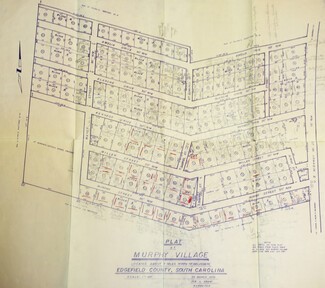
Long-standing traditions remain important aspects of our community. These traditions serve to reinforce our beliefs in religion and way-of-life. An ethnic minority must never be forced to abandon their culture in exchange for acceptance.
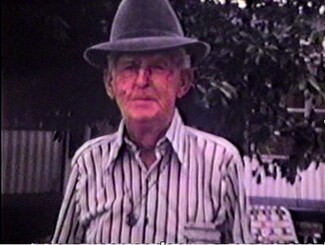
EB: Irish Travellers are not recognised as an ethnic group in the US. Do you think they should and in that case, why?
MC: Irish-American Travellers in the United States must be recognised as an ethnic minority. The United Nations International Covenant on Civil and Political Rights (ICCPR) was adopted on December 19, 1964, and came into force on March 23, 1976. The United States of America (USA) both ratified and is a signatory to this important international human rights document. Irish-American Travelers meet all the criteria required under Article 27 of this document and denying their recognition as a minority in the US is in violation of the ICCPR. Irish-American Travellers have a distinct culture, customs, and traditions and are seen by themselves and others as different, a fact that has repeatedly been documented. They are recognised as a minority in Ireland their country of origin, and the United Kingdom (UK).
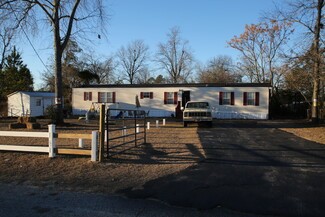
EB: In the UK, Irish Travellers are among the most discriminated against ethnic groups. How about the USA?
MC: Irish-American Travellers are perceived as an undesirable group by most of the United States (US) population which has resulted in discrimination and racism. Like the schoolyard bully who hits his victim without fear of retaliation or public outcry, the mass media promotes the image of a race made up of only con-artists, criminals, and thieves. The medias false narrative is used to reinforce racist beliefs and intensifies racial discrimination against people who have endured such treatment for centuries. My book, entitled: "Irish Travellers: An undocumented Journey Through History" gives several examples of unjustified prosecutions and discrimination by law enforcement against our ethnic minority in the US.
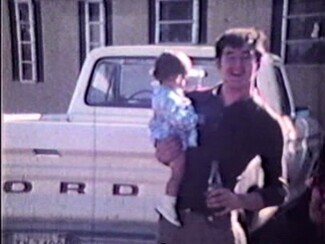
EB: Looking at local papers headlines, there are tensions between the Murphy Village residents and the 'outside' world. Do you think there are efforts made on both sides to accept each other not?
MC: People often fear what they do not understand and reject those who live differently in favor of the familiar. This misunderstanding has led to propaganda and out-and-out lies about our ethnic minority and way-of-life. False accusations of criminal activity, underage marriages, and child abuse have forced our people to remain on the fringes of society. The media reports negative events involving our minority with glee, refusing to report the crimes committed against the innocent of our groups. Two years ago, the Department of Social Services (DSS), State of South Carolina investigated alleged underage marriages and sexual abuse of young girls in our community. In their effort to prove wrong, right, state officials conducted an early morning raid on local schools and took into protective custody Irish-American Traveller girls ranging in ages from 6 to 12 years. These innocent children were subjected to medical exams to prove their innocence without their parents’ approval. Truth holds little importance when compared to the media's hunger for increased ratings, readership, and sensationalism. Your question used the word “tensions” between Murphy Village and the "outside world." Perhaps you should have used the word intimidation or the phrase race hatred in the narrative of your question.
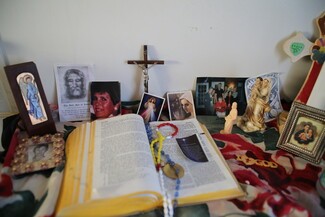
EB: There is an obvious wealth divide between the 'original' Murphy Village and the other side of the road where Travellers live in huge mansions. Could you explain why?
MC: Murphy Village was the original encampment and has seen little improvement since its development. As our community grew, it became necessary for future generations to move to adjacent lands. As years passed homes became larger depending on the financial success of each family. Like all communities, there are those who have been more successful in business, and this has led to a wealth divide in our community. Irish-American Travellers have invested money in real estate, rental properties, and mobile home parks, not only in South Carolina but neighbouring states.
The most striking divide is the one that exists between the three encampments in South Carolina, Tennessee, and Texas. South Carolina is the most developed, followed by Tennessee, and lastly Texas.

EB: How do you feel about settling down?
MC: I believe Irish Travellers in Ireland, the United Kingdom (UK), and the United States (US) must settle down, educate their children and demand their rightful place in society. But I do miss the travelling: travelling the open road, not knowing what’s around the next corner, meeting new people, and seeing the natural wonders of the United States are all compelling and intoxicating.
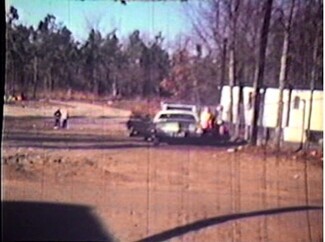
EB: Do you think there will be more Irish Travellers going into higher education and marry outside the community?
MC: I have always believed the pathway to success is education and children follow the paths taken by their parents. I married my wife when I was 19-years-old and looked into the eyes of my first born child when I was 20-years-old. I saw in my child's eyes the ability to overcome any hurdle and achieve any goal, but only if I took her by the hand and led her down the path. I attended university, became a mortgage underwriter, and encouraged my children to fight for what they wanted. My oldest son is going to medical school to be a cardio-thoracic surgeon. My second son is going to medical school to become a neurosurgeon. My daughter is a surgical nurse, and I have a daughter in school becoming an emergency room nurse. My daughter married a young, uneducated Traveller from our community.
My family has set an example of what is possible in our community in South Carolina. There has been a recent increase in high school graduates, but as a minority has a long way to go. Marriage to outsiders is not forbidden, but it is not encouraged.
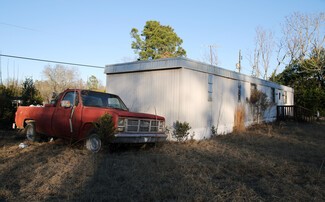
EB: Do you think there is a danger of an extinction of your community at some point?
MC: This question is perhaps the most difficult to answer for several different reasons. History teaches us that to survive all cultures must evolve with an ever-changing world. For some, change comes slowly and often at great sacrifice requiring the loss of old-world traditions in favor of acceptance. Irish-American Travellers because of their reluctance to change have become people at odds with society. We are a people that belong more in the past than in the present. Arranged marriages, the need to find safety within our small community, and refusal to accept change all bring into question our longevity.
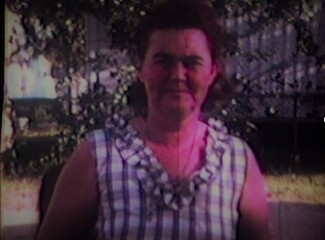
EB: How do you see the future of your community?
I see our community retaining their ethnicity and traditions, but eventually abandoning of life on the road in favour of a settled way-of-life.
By Mike J Carroll and Elisabeth Blanchet
To order Mike Carroll’s book click on this link: Irish Travellers: An Undocumented Journey Through History
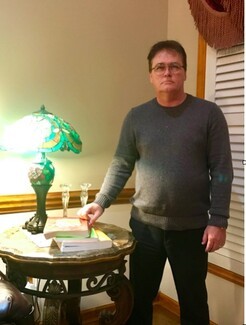
The Irish in America: Long Journey Home
Film details, brief synopsis, cast & crew, mark zwonitzer, maureen fitzgerald, michael murphy, peggy noonan, peter quinn, eileen ivors, technical specs.
The story of Irish immigrants to the United States from the arrival of the earliest immigrants in the mid-19th Century to the present. Successful Irish-Americans from all walks of life share their stories.
Thomas Lennon

Elliot Gorn
Elisabeth israels perry, michael malone, thomas fleming, william kennedy, kevin conneff, arthur gelb, joseph m curran, annelise orleck, williams h a williams, patrick campbell, robert scally, paddy moloney, earl niehaus, margo lockwood, robert a caro, magaret maccurtain, lawrence mccaffrey, john aloysius farrell, richard whalen, frank mccourt, abigail mccarthy, robert snyder, kevin kenny, matt molloy, david emmons, donald jordan, barbara gelb, jordan anderson, gregory andracke, mikaela beardsley, thomas n brown, sharron buckley, michael chin, keith chirgwin, jessica cohen, joan ganz cooney, elvis costello, richard ben cramer, coheen dube, thomas flanagan, duncan forbes, jeffrey frez-albrecht, mike gibbons, diane hamilton, oren jacoby, fiachra judge, brian keane, abigail kende, beth levison, rachel lippman, nick mavroson, denis mcardle, niall mccarthy, laura mckellar, mick moloney, van morrison, hamish niven, sinead o'connor, liam o'maonlai, gearoid ohallmhurain, maria patrick, alex radnoti, juan rodriguez, tiffany romain, robert salsbury, michael sampey, bobby sheparo, janet simonelli, skip sorelle, jeremy stavenhagen, dominick tavella, fiachra trench, geoffrey c ward.
Sign Up now to stay up to date with all of the latest news from TCM.

Your Browser is Not Supported
To view this content, please use one of the following compatible browsers:
Safari v11+
Firefox Quantum
Microsoft Edge

The Irish in America: Long Journey Home
(4 videocassettes, 345 min., $79.99: Walt Disney Home Video; $149.95 w/PPR: PBS Video [800-344-3337]) Vol. 13, Issue 2
by Randy Pitman
March 11, 1998
Rating: 3 of 5
When John F. Kennedy became the 35th President, according to one interviewee in this epic chronicle, the "good news was that the Irish-Catholics had arrived; the bad news was that he was a Protestant from Harvard." Although we missed the opening (and some say best) episode, The Great Hunger , the remaining three volumes of this handsomely packaged 4-video set held more than a few narrative four-leaf clovers. Tracing the history of the Irish in America from the earliest immigrants, who arrived shortly after the founding of Jamestown in 1607, through Kennedy's 1960 triumph, viewers will come away with a decent general overview of the Irish experience in America, a handful of stirring stories of individuals (John L. Sullivan, John Mackay, Alfred E. Smith, and Eugene O'Neill, among others), and some fine anecdotes from notable interviewees (including Angela's Ashes ' author Frank McCourt and novelist Thomas Fleming). Ironically, the series is strongest when it leans more toward biography than general history--for the simple reason that the story of the Irish is often indistinguishable from the story of European immigrants. Sure to be popular? 'Tis. Strongly recommended. Aud: H, C, P. ( R. Pitman )
Star Ratings
As of March 2022, Video Librarian has changed from a four-star rating system to a five-star one. This change allows our reviewers to have a wider range of critical viewpoints, as well as to synchronize with Google’s rating structure. This change affects all reviews from March 2022 onwards. All reviews from before this period will still retain their original rating. Future film submissions will be considered our new 1-5 star criteria.
Order From Your Favorite Distributor Today:
From the Irish countryside to the American South: Traveller Emigration to the US

Irish Travellers are well known for moving around Ireland and the rest of the British Isles. But, over the years, they’ve also ventured further afield. From the early 1800s on, they began to arrive in the US and became a particularly prominent community in the American South.
Although the full story of the Traveller diaspora isn’t clear and there are few sources written by its own community members, here’s what we know about their arrival in the US.
Why Travellers left Ireland
Members of the Traveller community left Ireland for the same reasons as other Irish emigrants. Many left during the Great Famine in the 19th century, while others left during subsequent economic downturns.
But, over the years, Travellers had their own unique reasons to emigrate too. For example, to avoid discrimination and forced settlement.
During a lecture hosted by EPIC The Irish Emigration Museum, sociologist and human rights activist Dr. Sindy Joyce explored some of these reasons:
“Some families would have moved because of persecution; there were times when children were being taken off the community and being put into industrial schools,” she said. “But there were also times when it would have been for better economic opportunities… a lot of people of the Famine years would have moved because of the hardship.”
Some emigration to the US was even forced. As Ian Hancock, director of Romani Studies at the University of Texas, noted in 1986 : “From Cromwell’s time on, large numbers of British Travellers, including the Irish Travellers, were transported to the Americas.”
However, the largest period of migration to the US appears to have taken place in the mid-19th century, as a result of the Great Famine.
Where did they go?
According to a 1971 journal by Jared Harper and Charles Hudson, Irish Travellers first settled in Tonawanda, New York; Pittsburgh and Germantown, Pennsylvania; and Washington, D.C. This information, the journal says, comes from the Travellers’ own oral history.
The work of Frederick S. Arnold, an American folklorist, offers an insight into just how widespread the Irish Traveller community in the US was. In 1898, he visited a camp outside New York where a man called Lackey Costello offered to teach him some Cant – the language of Irish Travellers.
Arnold stayed at the camp for a couple of days. After this, he sought out other Irish Travellers to speak Cant with. He found them throughout the states of Connecticut, Massachussetts and New York.
Many of the first Travellers to arrive in the US in the 1800s moved South – particularly after the American Civil War. Later arrivals mainly lived in the North. The former are known as Sawries, while the latter are called Greenhorns, according to Hancock.
In the South, Irish Travellers became well-known as horse and mule traders.
Establishing communities in the South
During the Great Depression, the US government funded the Federal Writers’ Project which created travel guides for each state. The guides for Atlanta and Tennessee both mention Irish Travellers and their history there.
According to ‘ Atlanta, a city of the modern South ’, the roots of many southern Travellers can be traced back to families that initially emigrated to Washington and established a livery stable there. These were the Rileys, the McNamaras, the Carrolls, the Sherlocks, the Garmons, the Costellos, the Dartys and the O’Haras.
As time passed, they began to travel the country in their wagons and found further opportunities down south.
Annual gatherings
One group, led by a man called Pat O’Hara, established a base in Nashville, Tennessee. Then they moved on and settled in Atlanta, Georgia. Here, some Travellers purchased land but most of them eventually returned to the road.
However, in 1881, when a leading Traveller called John McNamara was buried in Atlanta’s Oakland Cemetery, the community established a strong tie with the city. So it became a tradition to have funeral masses in the Gothic, red brick Church of the Immaculate Conception once a year.
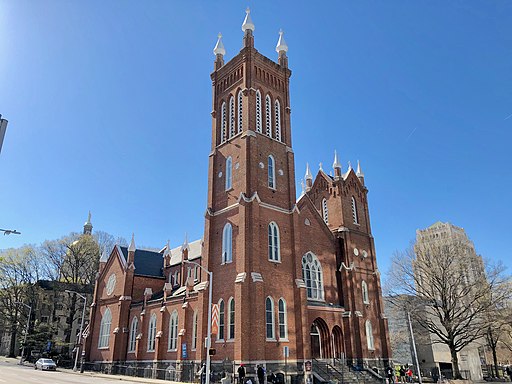
Warren LeMay from Cincinnati, OH, United States, CC0, via Wikimedia Commons
Here, the scattered community came together to hold funerals, weddings and business meetings every April. The Atlanta guidebook notes “the vigorous beauty of black-haired, blue-eyed Irish girls in the finery of bright dresses and costume jewelry”, while it labels the men as “good American citizens” because they enlisted during times of war.
At some point, it was decided to have annual reunions in Nashville, Tennessee, too. During the last week of April, Travellers who were based west of the Allegheny Mountains would set up camp here. Those to the east continued to gather in Atlanta.
In the 1940s, when the Tennessee guidebook was written, around 3,000 Travellers set up their green tents and trailers in a field below an underpass. In the local Mount Calvary Cemetery, visitors can still see elaborately adorned graves bearing Traveller names like Gorman and Sherlock.
Economic success
Throughout the 1800s, animal trading proved to be a successful business for Travellers in the South. As Harper and Hudson explain, some got jobs in large stock centres, while others drove animals out into the countryside to trade with farmers. Occasionally, they would open a shop and trade from there.
According to the Tennessee State guide , written in 1949, Irish Travellers bought many fine animals. But they were also known to take on sick mules and overworked horses, which often recovered under their care. Some families shared depots in cities like New Orleans and Atlanta where they could store their animals before selling them at auction.
The guide says they traded animals abroad too. In fact, it claims that “much of the mountain artillery of the Italian Army was carried into the hills of Ethiopia on the backs of mules bought for the Italian Government by the Irish Nomads.”
While it is difficult to confirm this assertion, Harper and Hudson note that the Travellers enjoyed a boom in mule trading during World War II. A newspaper article published in the Las Vegas Age on December 3rd, 1943, also gives some credence to the claim.
It reads: “In 1935, before Mussolini invaded Ethiopia, he practically denuded Missouri, Arkansas, and Texas of mules. The Italian government bought about 300,000.”
Discrimination
While the Irish Traveller community flourished in the US South, members weren’t always welcomed with open arms. In 1927, the state of Georgia introduced an anti-Traveller tax. It placed a $250 levy on each group of “horse-traders” or “gypsies”, who lived in tents or travelled in covered wagons and automobiles.
Irish Travellers in the South today
Despite the discrimination faced by some Travellers, the community still has a strong presence in the American South.
Murphy Village in South Carolina is probably the best-known community today. Located just a couple hours from Atlanta, it is home to around 2,000 Travellers of Irish descent. According to locals , the town is named after Fr. Joseph Murphy – a Catholic priest who convinced them to settle near his church back in the 1960s.
Today, roughly 10,000 people in the US identify as Irish Travellers. This is a significant figure considering the population in Ireland stands at around 30,000 . However, because the US census doesn’t record Irish Traveller ethnicity, the true number remains unclear.
To learn more about the emigration patterns of Irish Travellers, watch our lecture ‘ Irish Traveller Communities Abroad ’. EPIC’s Historian in Residence, Dr Maurice Casey, explores the topic in detail.

- Rent or buy
- Categories Categories
- Getting Started

Irish in America
Customers also watched.

The Borgias

How are ratings calculated? Toggle Expand Toggle Expand
- Amazon Newsletter
- About Amazon
- Accessibility
- Sustainability
- Press Center
- Investor Relations
- Amazon Devices
- Amazon Science
- Sell on Amazon
- Sell apps on Amazon
- Supply to Amazon
- Protect & Build Your Brand
- Become an Affiliate
- Become a Delivery Driver
- Start a Package Delivery Business
- Advertise Your Products
- Self-Publish with Us
- Become an Amazon Hub Partner
- › See More Ways to Make Money
- Amazon Visa
- Amazon Store Card
- Amazon Secured Card
- Amazon Business Card
- Shop with Points
- Credit Card Marketplace
- Reload Your Balance
- Amazon Currency Converter
- Your Account
- Your Orders
- Shipping Rates & Policies
- Amazon Prime
- Returns & Replacements
- Manage Your Content and Devices
- Recalls and Product Safety Alerts
- Conditions of Use
- Privacy Notice
- Consumer Health Data Privacy Disclosure
- Your Ads Privacy Choices
- Skip to main content
- Keyboard shortcuts for audio player
The Picture Show
Daily picture show, documenting the irish travellers: a nomadic culture of yore.
Lauren Rock
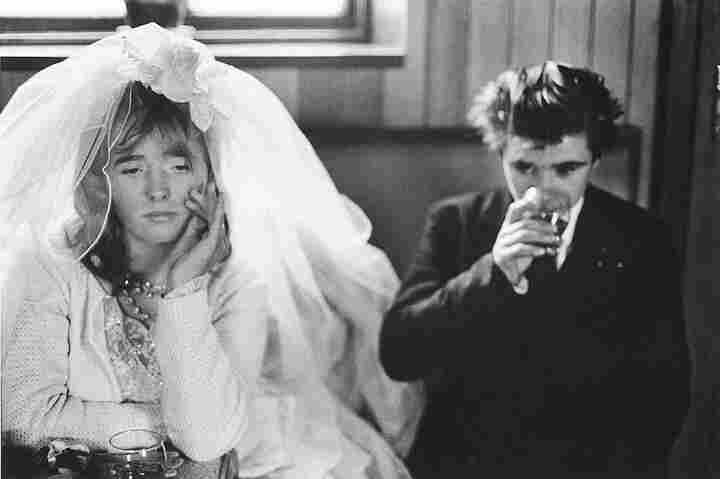
Throughout my life I have regularly traveled to my mother's home city of Dublin. During these trips I would regularly see groups of people living in caravans on the sides of the road, and I always wondered who they were and what their lives were like.
I later found out they belonged to a small ethnic minority called "Travellers" — nomads who spend most of their life, literally on the road. While their history has been hard to document — they have no written records — they are thought to have separated from the settled Irish community at least 1,000 years ago.
The Travellers (until recently also called "tinkers" or "gypsies") often live in ad hoc encampments, in direct contrast to "settled" people in Ireland. They are thought to be descended from a group of nomadic craftsman, with the name "tinker" a reference to the sound of a hammer hitting an anvil. (The reference is now considered derogatory.)
In 1965 Dublin-born photographer Alen MacWeeney stumbled across a Travellers' encampment and became fascinated with their way of life. He spent the next six years making photographs and recording their stories and music. Despite shooting the photos in the late '60s, it wasn't until 2007 that he found a publisher for his work.

Bernie Ward, Cherry Orchard Courtesy of Alen MacWeeney hide caption
Bernie Ward, Cherry Orchard
In his book, Irish Travellers: Tinkers No More — which also comes with a CD of Traveller music recordings — MacWeeny shows us a gritty, intimate portrait of the people he eventually came to call friends. He compares the Travellers to the migrant farmers of the American Depression: "poor, white, and dispossessed."
"Theirs was a bigger way of life than mine, with its daily struggle for survival, compared to my struggle to find images symbolic and representative of that life," he said in his book.
MacWeeney got his start at age 20 as an assistant for Richard Avedon in Paris and has since made a career as a portrait and fashion photographer. But his images of the Travellers reveal a raw and intimate side to his work.
"Traveller families have always been very close-knit, held together in a tight unspoken knot, with lifelong bonds and sometimes varying a lifelong set of troubles," he said.
Today, however, the Traveller lifestyle has changed dramatically from even a few decades ago. Many have embraced modern culture and become "settled," no longer living apart from the mainstream. There is even a reality TV show, My Big Fat Gypsy Wedding , which showcases Traveller girls and their theatrical, over-the-top weddings.
But MacWeeney believes that the Travellers are "reluctant as settled and envy the other life of travelling." His book stands as a document of an era, and a way of life that is slowly fading into the past.
- Cast & crew
- User reviews

An epic 12-year journey into the brutal and secretive world of Irish Traveler bare-knuckle fighting. This film follows a history of violent feuding between rival clans. An epic 12-year journey into the brutal and secretive world of Irish Traveler bare-knuckle fighting. This film follows a history of violent feuding between rival clans. An epic 12-year journey into the brutal and secretive world of Irish Traveler bare-knuckle fighting. This film follows a history of violent feuding between rival clans.
- James Quinn McDonagh
- Paddy Quinn McDonagh
- Michael Quinn McDonagh
- 15 User reviews
- 36 Critic reviews
- 65 Metascore
- 1 win & 4 nominations

- All cast & crew
- Production, box office & more at IMDbPro
More like this

User reviews 15
- Aug 9, 2011
- How long is Knuckle? Powered by Alexa
- December 9, 2011 (United States)
- United Kingdom
- Official site
- King of the Travellers
- BBC Storyville
- Bord Scannán na hÉireann / The Irish Film Board
- See more company credits at IMDbPro
- Dec 11, 2011
Technical specs
- Runtime 1 hour 37 minutes
Related news
Contribute to this page.

- See more gaps
- Learn more about contributing
More to explore
Recently viewed.
Advertisement
Supported by
Movie Review | 'Knuckle'
Brawling for Money, Clan and Just Because
- Share full article

By Manohla Dargis
- Dec. 8, 2011
The fighting families in the documentary “Knuckle” are blood relatives with a vengeance. The movie, a no-frills affair from the first-time Irish director Ian Palmer, offers a circumscribed look inside the often-closed world of Irish travelers through their bare-knuckle fistfights. Historically nomads who were once better known as tinkers and described by Yeats as “the people of the roads,” the travelers long lived outside the mainstream, but from their on-camera showboating — as they duke it out, crow about their wins, taunt the losers and bang the drums for the next slugfest — they’re ready for their collective close-up.
Mr. Palmer, as he explains in voice-over, stumbled on the fights by chance. While he was videotaping the wedding of a traveler, Michael Quinn McDonagh, Mr. Palmer met Michael’s older brother James. A charismatic clan leader, James — called the Mighty Quinn or Baldy James depending on who’s doing the calling — turned out to be a champion fighter. Invited to videotape one of James’s fights, Mr. Palmer grabbed his camera. Thus began a documentary filmmaking odyssey that would last 12 staggering years and, after the 2011 Sundance Film Festival, found Mr. Palmer on the festival circuit and signed to a deal with HBO, which plans to turn “Knuckle” into a dramatic series. The stars, as it were, of “Knuckle” are James Quinn McDonagh and his most vociferous opponent, Paddy Joyce a k a the Lurcher, a shouter with a handlebar mustache and enough body hair to knit a sweater. Although it was Michael who first gave Mr. Palmer entry into this world, it was James who kept the director’s attention and probably fueled his commitment. A meaty slab of a man who likes to keep his head shaved — perhaps in part because the fights can turn dirty — James is his family’s best fighter, as undefeated as he is unbowed. He’s also a good talker (useful subtitles help with the travelers’ heavily accented English), even if he doesn’t say much, including about traveler life beyond the brawling.
For a while his reticence is scarcely an issue because the fights — sloppy, messy, brutal — are so involving, both appalling and appallingly watchable even in smeariest video. It’s always the same: two men, with bare knuckles and sagging or ridged bellies, square off in a rural corner and smack each other to cheers and jeers of the crowd. It seems depressingly pointless.
Not that the fighters don’t have plenty of reasons to throw around, including tradition, pride, feuds — somewhere in the past, a caravan was destroyed and sometime later a man was killed — and money. As it turns out, the families bet heavily on the fights (the stakes are high), which effectively means that they’re helping support themselves by beating their own people bloody.
If Mr. Palmer sees any political significance in this ritualized feuding he doesn’t say, though the mournful string music suggests that he’d like you to see the fights in tragic terms. They are in a sense, though they’re also opportunistic and human. While it’s frustrating that Mr. Palmer doesn’t dig deep into the complexities of the fights, one of the movie’s strengths is the honesty with which he confesses his doubts about them. He also expresses reservations about his reasons for following the bouts, an admission that both speaks to the motivations of documentary cinema (why film?) and to those who have ever wondered why they can’t look away from violence. Year after bruising year, Mr. Palmer kept his sights on these grim battles, an epic endeavor that suggests that looking away was never an option.
Knuckle: Opens on Friday in New York, Los Angeles and Austin, Tex. Directed by Ian Palmer; directors of photography, Michael Doyle and Mr. Palmer; edited by Ollie Huddleston; music by Ilan Eshkeri and Essica Dannheisser; produced by Mr. Palmer and Teddy Leifer; released by Arc Entertainment. In Manhattan at Cinema Village, 22 East 12th Street, Greenwich Village. Running time: 1 hour 33 minutes.
Explore More in TV and Movies
Not sure what to watch next we can help..
Leslye Headland’s new “Star Wars” show, The Acolyte,” is a dream come true, but she knows it carries enormous expectations .
Once relegated to supporting roles, the comedian Michelle Buteau is a star of the film “Babes” and is moving to a bigger stage, Radio City Music Hall, for her new special.
American audiences used to balk at subtitles. But recent hits like “Shogun” and “Everything Everywhere All at Once” show how much that has changed .
If you are overwhelmed by the endless options, don’t despair — we put together the best offerings on Netflix , Max , Disney+ , Amazon Prime and Hulu to make choosing your next binge a little easier.
Sign up for our Watching newsletter to get recommendations on the best films and TV shows to stream and watch, delivered to your inbox.
- Skip to main content
- Skip to secondary menu
- Skip to primary sidebar
- Skip to footer

Irish America
Bare-Faced and Bare-Knuckled: Fighting Traveller Families
October 1, 2011 by Leave a Comment
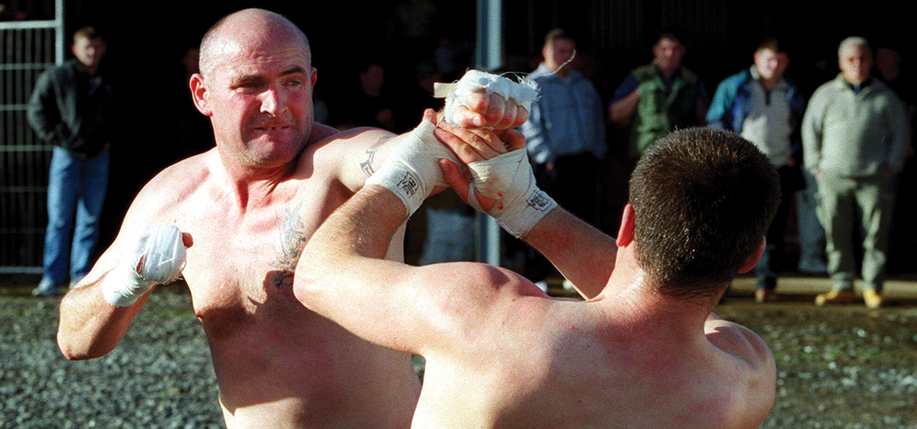
Filmed carefully over a period of twelve years, the documentary Knuckle sheds light on the inner workings and on-going feuds of three Irish Traveller clans. Up next for the film: a New York premiere and an HBO spin-off series.
Don’t let the bandaged fist in the photo fool you. Knuckle , Ian Palmer’s documentary about the bare-fisted boxing tradition of the Irish Travellers, might be about blood, but it’s not about gore. The blood Palmer seems most interested in is the stuff that pumps through the veins of the intricately connected Traveller community he visited and filmed over 12 years, a society where cousins marry, work together and, when the occasion arises, beat each other senseless.
“I wanted to make a film from inside their world,” Palmer told indie/WIRE when Knuckle premiered earlier this year at the Sundance Film Festival. “The idea and the approach was simple. I spent as much time as I could with the families with a minimal crew and small camera.”
His approach resonated at HBO, which is adapting the documentary into a new drama series. Industry blogs hint that the HBO treatment will trend toward dark comedy, since it is being developed by writer Irvine Welsh (author of the gritty novel Trainspotting, on which the film of the same name was based), and director Jody Hill of Rough House Pictures, the project’s producer, whose politically incorrect comedy Easthouse & Down also airs on HBO.
Knuckle will have its New York premiere on September 30 at Irish Film New York, which will feature five other recent Irish releases. This new screening series of contemporary Irish films is co-presented by New York University’s Glucksman Ireland House, and runs September 30 through October 2 at NYU’s Cantor Film Center.
Festival founder and curator Niall McKay, who is also the founder and director of the San Francisco Irish Film Festival and co-founder of the LA Irish Film Festival, said he deliberately chose films for the series that depict Ireland as it is today.
“I particularly wanted films that had a real physical effect on me,” he said, “ones that made me cry or laugh or get angry.”
“We’re pleased that Niall McKay has chosen to work with Glucksman Ireland House to present this excellent addition to the city’s arts scene,” said Loretta Brennan Glucksman, Chair of the Glucksman Ireland House NYU Advisory Board. She praised the festival for presenting “works that would not otherwise be seen by a wide audience. It should be an exciting experience for our Irish American community.”
Besides Knuckle, Irish Film New York will also feature the New York premieres of the Galway Film Fleadh-winning Parked with Colm Meany, a study of a friendship between two men who live in their cars, and The Runway, the story of a downed pilot in Cork rescued by a little boy, with Weeds star Demián Bichir. Other films include the bittersweet coming-of-ager, 32A, directed by Marion Quinn, a hilarious peek at Dublin teenagers called Pyjama Girls, and Sensation, about a man who tries to lose his virginity but ends up running a brothel. Directors and stars of the films will appear at Q&A sessions after each screening.
There will also be an industry panel in conjunction with NYU’s Tisch School of the Arts, where filmmakers and producers will discuss the direction of Irish film at home and abroad.
McKay says the mission of Irish Film New York is to expose American audiences to the best in Irish contemporary cinema and to give Irish filmmakers “a fair crack at the U.S. market.” It will join with the San Francisco and Los Angeles Irish Film Festivals to bring the filmmakers of Knuckle, Parked, and The Runway on a tri-city tour in anticipation of each film’s U.S. release. Knuckle will appear in independent U.S. theatres this December, with The Runway and Parked following shortly after.
Director Palmer admitted to Irish Independent Weekend that he did not approach the filming of Knuckle like an investigative journalist.
“It was more about observing the [Traveller] families and trying to let the life reveal itself. The reasons behind the fighting were difficult to get at. The feuds stretched back over generations. It was always about defending your name and family pride.”
The three rival families that he studied, the Quinn McDonaghs, the Nevins and the Joyces, are all related, often sharing the same grandparents. As one of the women remarks, “We’re all one in the end.” Even if a Nevin married a Quinn, or a Quinn has a mother who is a Joyce, the rationale for fighting rests on defending just one family’s name.
While Palmer is able to ferret out the powerful origin of one particular feud, the sources of the disputes don’t seem as important as the disputes themselves. “Would it not be possible for you guys to get together to talk about it and make up?” the director asks Michael Quinn McDonagh, on his way to a fight in England. “You’re crazy,” Michael laughs, dumfounded at Palmer’s naiveté.
The matches are called “fair fights” and are organized with unexpected formality: when a challenge is issued, it is promptly accepted, a date and location are set, and the fighters hit the gym to train weeks before the match. Fair fights take place in secret locations with few onlookers. There are referees from neutral families and lots of rules. And everybody obeys the rules. Anyone who doesn’t is disqualified, and his family takes the loss.
Technology and money play crucial roles in this tradition-bound ritual: Families exchange videotaped challenges and fight results are reported by cell phones. Bets are negotiated for astonishing amounts of cash; winner (and family) takes all.
The fighters accept Palmer’s presence with the nonchalance of a generation bred on reality TV. But despite his desire to let the story emerge from the people themselves, they never forget the camera is there. Dodging it, challenging it, playing with it, they turn the camera – with narrator Palmer – into another character in the film.
Palmer said it was only during editing that he realized that the narrative would work better if he allowed himself to be an obvious part of his film. “The film is more honest for accepting that Knuckle is my experience of this world,” he said, “and my relationship to the people in the film and how that affected me.”
His “shaky cam” character dances around the fair fight scenes with a perilous immediacy. At any moment, you expect a fist to fly into the lens. Because he interviews both families involved in a fight, Palmer never appears to be taking sides. Even though he follows one fighter’s story more closely than others, he is not making a fight movie. There is no Big Match to decide it all, no good guys or bad.
James Quinn McDonagh, the soft-spoken man whose winning battles form the core of the film, says over and over again he doesn’t want to fight, but is provoked into it by the other families, claiming he’d like “to be known for something more positive.”
James doesn’t like to train either. “I’d rather be socializing,” he quips. But when a challenge comes from the Joyces or the Nevins, he comes out with fists blaring. “It’s the best way to sort things out,” he explains. Even after he swears off fighting, he is seen anxiously prepping his brother by cell phone before a fight, exclaiming as he waits for the results, “Grandfathers in Heaven, send Michael the power!”
Why do the fights continue? Palmer sees “fair fighting as still mainly about family and individual honor and pride,” a deeply felt emotion expressed here in macho posturing: “We will fight because we are men, we’re Joyce men.”
Then there’s the fast cash from the betting. The suggestion of inconsistent employment implies that fighting is a needed source of income, and might also be a way to establish self-respect when the outside world offers too little.
But within a closed community, the flip side of self-respect can be a cult of personality. Joe Joyce, an older man who nevertheless continues to fight, boasts, “I’m still King of the Travellers!” One of James’ opponents, the dewy-faced youngster, Davy Nevins, says the fights are not about revenge.
“James thinks he’s better than us,” he explains calmly. “People think he’s a god. I don’t want to defeat the Quinns, I just want to defeat James.”
Some Nevins relatives suggest a possible link between being a Traveller and the need to keep fighting. When an old man muses, “There’s always been wars,” the younger Spike Nevin replies, “But we’re Travellers. At least wars are about something. Something right.”
Conspicuously absent from the film are Traveller women, who are reluctant to appear on camera. Yet, the only strong voices condemning the fighting come from a sofa full of older women gathered for an after-fight party. “I think it should end,” one woman states firmly. “All this fighting over names. It’s an awful life to have. It should be finished.”
“I don’t know what they’re fighting for,” James’ mother adds.
“When my sons grow up, they aren’t doing it,” a much younger woman declares with convincing resolution. But she quickly adds a caveat, “If I can help it.”
Reader Interactions
Leave a reply cancel reply.
Your email address will not be published. Required fields are marked *
Save my name, email, and website in this browser for the next time I comment.
- Give a Gift
- Terms of Use & Privacy Policy
- Français (FR)
- Deutsch (DE)
- English (EN)
- Español (ES)
- Polski (PL)
- Italiano (IT)
RE: European Stories


Re: Little Britain in the Dordogne

Re: Olive Thieves in Spain

Re: Male Identity Crisis
Being a man in the modern world.

Re: Free Love on La Gomera

Re: Treating Drug Addicts in Italy

Re: Are the Israeli Hostages Coming Back?
Re: irish travellers a minority in danger.
Available until 07/11/2026
- Investigation and reports
- Documentaries and Reportage
You may also like

ARTE Reportage
North korea: kim's men.

Crazy Borders
A scottish court in the netherlands.

Lost Places in Italy

360° Reportage
The indigenous trans women of the andes.

Square Artist: David Safier

Putin, NATO, and Europe
The most viewed videos on arte.

Albéric Magnard: Guercœur
Opéra national du rhin, strasbourg.

Sicily: Italy's Island Under the Sun

Philippines: Child Rape Online

Winds of Change
How climate change makes storms worse.

ARTE Europe Weekly
What do young europeans want.
‘So many people in tents': New documentary follows migrant families' struggles, triumphs in Chicago
"desde cero: the migrant journey in chicago," an hour-long documentary from nbc chicago and telemundo chicago, explores the human side of the city's crisis., by sandra torres , ivon espitia and ds shin • published may 28, 2024 • updated on may 29, 2024 at 11:35 am.
Chicago has welcomed tens of thousands of asylum seekers since August 2022 and spent nearly $300 million to house, feed and care for the new arrivals, a majority from Venezuela. But what is the journey like for these new Chicago residents, from the moment they arrive in the city?
"Desde Cero: The Migrant Journey in Chicago," an hour-long documentary from NBC Chicago and Telemundo Chicago, explores the human side of this crisis. Watch the documentary in the player above.
Watch NBC 5 Chicago news stream free, 24/7, wherever you are
For nearly six months, NBC Chicago reporter Sandra Torres, Telemundo Chicago reporter Ivon Espitia and Senior Digital Producer DS Shin followed the lives of two families and several individuals who left Venezuela to seek asylum in the United States to provide a better life for their families.
"When I got to the 25th Police District here in Chicago ... I said, 'Oh my God.' I went into panic mode when I saw so many people in tents, little children sleeping outside in the cold," said Maria, who migrated to Chicago with her husband and two young sons in April 2023. NBC Chicago and Telemundo Chicago are not using the families' full names to protect their identities.
Former Mayor Lori Lightfoot, in office at that time, declared a State of Emergency before handing over the reins to current Chicago Mayor Brandon Johnson, saying the city was at a breaking point.
Lightfoot opened up for the first time in the documentary about how she handled the crisis, a year later.
"It's like when you book a hotel and they say, "No, I'm sorry, we don't have any occupancy." That was where we were at that point," Lightfoot told Torres.
The film also introduces you to a Venezuelan family of eight who obtained free tickets from a non-profit to fly to Chicago from Texas and had to sleep at an airport terminal and a Chicago Police Station for several days before moving on to four different temporary shelters.
"To sleep on the floor was somewhat uncomfortable," said Giovanny, who has six children with his wife Iris. "But nonetheless, we felt a bit protected, compared to what we experienced when we were crossing the jungle."
Traversing numerous countries, these families risked their lives to make it to North America. The documentary details their months-long walking journey to seek asylum in the United States, from the moment they leave South America to when they cross the U.S.-Mexico border.
Feeling out of the loop? We'll catch you up on the Chicago news you need to know. Sign up for the weekly Chicago Catch-Up newsletter here.
"No one is taking this trip for fun or for just improving its economic conditions. People are making this trip because they're surviving," said Bram Ebus, a consultant for the International Crisis Group, who spoke at length in the documentary about the obstacles migrants face, especially when they cross the Darien Gap, considered to be one of the most dangerous migrant routes in the world.
In the Chicago area, many have welcomed the newcomers with open arms, but there has also been intense pushback in different neighborhoods every time the city announces a new temporary shelter to house the migrants. This has resulted in racial tensions that have become a part of the story.
Is this a repeat of history? Chicago Urban Historian Shermann Dilla Thomas broke down how previous generations of migrants have been treated similarly.
Watch "Desde Cero: The Migrant Journey in Chicago" in the player and on the NBC Chicago News streaming channel on Peacock, Roku, Samsung TV, Xumo, Google TV, Pluto or your favorite streaming destination.
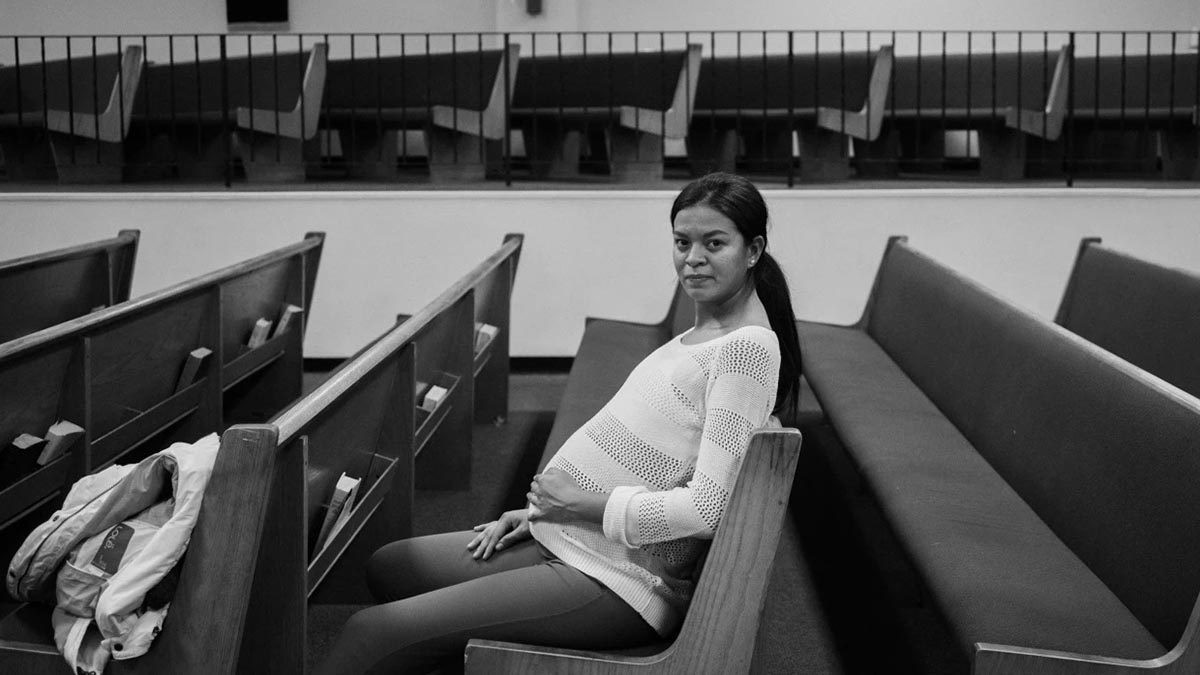
She fled violence while pregnant. Now a Venezuelan migrant is trying to build a better life in the US
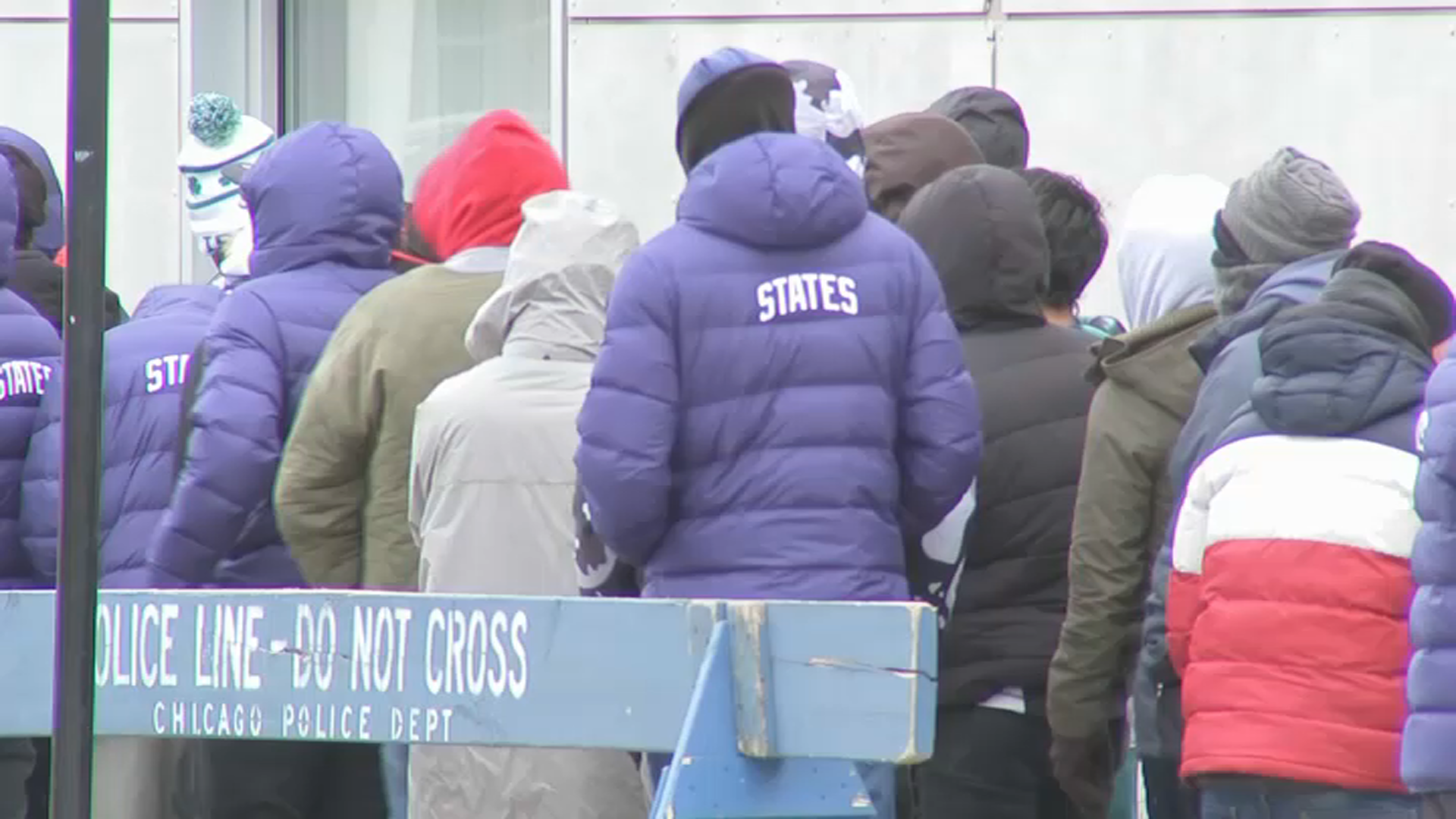
Chicago's migrant website obscures details on where $300 million was spent
This article tagged under:.
site categories
James cameron-backed $950m uk film studio refused planning permission, breaking news.
- “Disproportionate, Undemocratic & Vindictive”: Leading British Stars Criticize Labour Party’s Handling Of Row Over UK’s First Black Female MP
By Max Goldbart
Max Goldbart
International TV Co-Editor
More Stories By Max
- International Insider: What’s In A Phrase?; Indian Sci-Fi Epic; Netflix On Korea Path
- Nascent Studio 5X Strikes Production & Talent Deal With Anthony Kimble

Leading Black British stars, writers and execs have become the latest to criticize the Labour Party for its controversial mishandling of a row involving the UK’s first ever Black female MP.
Diane Abbott’s return, or departure, from the party she has been an MP for since 1987 has dominated UK front pages over the past week and the likes of Lenny Henry , David Harewood and Afua Hirsch have now had their say.
Related Stories

ITV Lands First UK General Election Debate Between Rishi Sunak & Keir Starmer

BBC News Presenter Apologizes To Nigel Farage On Air For "Inflammatory Language" Accusation

Prominent stars like Henry, Harewood and Adrian Lester are signatories, along with the likes of Yomi Adegoke , whose bestseller The List is being adapted for TV by A24, the BBC and HBO, and TV producers such as Pat Younge, Ayo Bakare and Maxine Watson.
Abbott, a staunch ally of former Labour leader Jeremy Corbyn, was suspended and investigated last year by Labour after writing a letter to The Observer in which she said Jews, Travellers and Irish people “are not all their lives subject to racism.” The comments were fiery given the Labour Party’s notorious recent struggles with antisemitism.
Abbott has been suspended since and, now that the general election is close, confusion has dominated the papers over the past few days over whether she has been reinstated and is allowed to stand again to be an MP, with differing messaging coming from senior Labour figures along with leader Keir Starmer and deputy Angela Rayner.
The open letter, which can be read in full below, said Starmer’s “denials on this matter must be treated with some scepticism.”
Labour’s mishandling of MP selection has been attracting ire from all sorts of places. Yesterday, Jon Stewart waded into the row , calling Labour’s decision to block a candidate from running for parliament over historical tweets related to Israel “the dumbest thing The UK has done since electing Boris Johnson.”
He was referring to a tweet liked by Faiza Shaheen that featured his famous 2014 ‘We Need to Talk About Israel’ sketch, although Shaheen said this wasn’t the only tweet the Labour Party had been concerned about.
The UK general election takes place on July 4. Labour remains around 20 points ahead of the Conservatives in the polls.
The letter in full
‘Loyalty has never been unconditional’ : Prominent Black Britons’ open letter about Diane Abbott and the Labour Party
We the undersigned are appalled at the Labour Party’s treatment of Diane Abbott, Britain’s first Black female MP.
Ms Abbott, one of Britain’s longest serving Members of Parliament, says she has been barred from standing in the constituency she has served for 37 years because of a poorly worded letter for which she immediately apologised.
We believe this is disproportionate, undemocratic and vindictive.
Sir Keir Starmer’s denials on this matter must be treated with some scepticism.
Just last Friday he said the investigation into her conduct had not been resolved even though Abbott had satisfactorily completed the disciplinary process in February.
Indeed the fact that the party reached its conclusion several months ago and failed to readmit her to the parliamentary party until earlier this week, after the story broke, indicates a determination to humiliate her.
Coming from a community where discrimination is a daily reality, we know unfairness when we see it.
Her treatment not only violates natural justice and common decency but is an example of the systemic racism highlighted in the Forde report on factionalism in the Labour Party commissioned by Starmer himself.
Criticisms of Diane Abbott, the barrister Martin Forde KC concluded, “are not simply a harsh response to perceived poor performance – they are expressions of visceral disgust, drawing (consciously or otherwise) on racist tropes, and they bear little resemblance to the criticisms of white male MPs elsewhere in the messages”.
An Amnesty International investigation into online abuse in 2017 found that Ms Abbott received almost half of all abuse against women MPs active on twitter in the first half of 2017.
Just two months ago it was revealed that the Tory party’s chief funder had told a meeting: when you see Ms Abbott on television “you just want to hate all Black women” And said the MP “should be shot”.
In the ensuing furore, the Labour party then tried to fundraise on the back of Abbott’s predicament, even as they continued to exclude her from the parliamentary party.
Given Labour’s recent embrace of others who have championed causes far more objectionable to its core values and its commitment to stamp out antisemitism in its ranks, the treatment of Abbott also smacks of a disgraceful double standard.
It is all the more upsetting given that Black communities have been among Labour’s most loyal supporters. But that loyalty has never been unconditional.
David Harewood OBE, actor
Lenny Henry, comedian
Gary Younge, professor
Heather Small, singer
Yomi Adegoke, author
Afua Hirsch, broadcaster and columnist
Reni Eddo-lodge, author
Emma Dabiri, author
Misan Harriman, director
Linton Kwesi Johnson, poet
Simon Frederick, director
Carys Afoko, podcaster
Adrian Lester, actor
Diane Evans, author
Jackie Kay, novelist
Azieb Pool, journalist and author
Lemn Sissay, poet
Giles Terera, actor
Patrick Younge, media executive
Sharmaine Lovegrove, publisher
Dr Shola Mos-Shogbamimu, activist, author & lawyer
Joseph Patterson, editor-in-chief at Complex UK
Lola Olokosie, teacher and writer
Bishop Dr. Desmond Jaddoo MBE, minister of religion and campaigner
Kayne Kawasaki, historian and cultural theorist
Ros Griffiths, community organiser
Afua Adom, journalist and broadcaster
Rowena Twesigwe, media and communications consultant
Lynda Smith, self-love & empowerment coach
Hugh Woozencroft, presenter
Maxine Watson, executive producer
Nelson Abbey, author
Scarlette Douglas, TV presenter
Juliana Olayinka, presenter
Ayo Bakare, TV producer
Marvyn Harrison, founder of Dope Black Dads
Priscilla Nwikpo, broadcaster
Ngozi Fulani, founder of Sistah Space
Rosanna Lewis, organiser at Sistah Space
Djanomi Robinson, operations manager at Sistah Space
Stushie, Miss Reggae Gold
Glenda
Must Read Stories
Par talks “still progressing” despite skydance sweetener, sony ceo says.

Doc Field In Need Of A Jolt Looks To France’s Sunny Side Event For Inspiration
John daly limited series in works with kevin james tapped to play iconic golfer, ‘grey’s anatomy’, ‘station 19’ finale recaps & jason george’s workplace move.
Subscribe to Deadline Breaking News Alerts and keep your inbox happy.
Read More About:
Deadline is a part of Penske Media Corporation. © 2024 Deadline Hollywood, LLC. All Rights Reserved.
Race row MP claims to be barred from UK election run by frontrunner Labour
Diane Abbott says Labour will not allow her to run in July election despite party reinstatement.

Diane Abbot has claimed she has been barred from standing as a candidate for the Labour Party in Britain’s upcoming general election.
The country’s first Black female lawmaker told the BBC on Wednesday that the party will not allow her to stand in the July 4 election, despite lifting a suspension that was enacted last year due to her comments on racism.
Keep reading
‘as someone with palestinian heritage, i couldn’t stay in the labour party’ ‘as someone with palestinian heritage, i ..., black britons fear for diane abbott after a millionaire’s call for violence black britons fear for diane abbott ..., uk conservatives’ top donor spoke of hating ‘all black women’ uk conservatives’ top donor spoke of ....
However Labour leader Keir Starmer has denied the claim.
“That’s not true,” the prime ministerial hopeful told reporters while campaigning in western England. “No decision has been taken to bar Diane Abbott,” he said.
Abbott , who was first elected to parliament for Labour in 1987, had informed Britain’s public broadcaster by text message that she would not be allowed to stand. “Although the whip has been restored, I am banned from standing as a Labour candidate,” she said.
However, it was unclear whether there had been direct communication on the matter with Labour, as she later posted on X that she was “very dismayed that numerous reports suggest I have been barred as a candidate”.
Abbott was reinstated as a Labour MP on Tuesday after the completion of a party investigation into comments she had made in a letter to The Observer newspaper, stating that Jewish, Irish and Traveller people “undoubtedly experience prejudice”, but do not face racism “all their lives”.
Abbott was suspended despite having apologised “unreservedly” for the comments.
A longtime campaigner on issues such as racism, poverty and international affairs in her London constituency of Hackney North and Stoke Newington, Abbott was a close ally of Jeremy Corbyn who led the party from 2015 to 2020.
Under Corbyn’s leadership, the left-leaning party was investigated by the equalities watchdog, which found serious failings in the way the party had tackled anti-Semitism.
Corbyn was replaced as party leader by Keir Starmer, who has sought to crack down on the claimed anti-Semitism.
Corbyn is also barred from running as a Labour candidate after he said anti-Semitism in the party had been “dramatically overstated” for political reasons. Last week he announced that he would run as an independent candidate.
‘Trailblazer’
Opposition lawmakers on the left of the Labour Party have been angered by Abbot’s treatment, noting the racism and sexism that she has faced in her decades in politics.
Jacqueline McKenzie, a human rights lawyer and a friend of Abbott, told BBC Radio she should have been given “greater respect and greater dignity than to have these leaks”.
In March, it was revealed by The Guardian newspaper that Frank Hester, the ruling Conservative Party’s biggest donor, had made racist remarks about Abbott, saying that looking at her made him want to hate all Black women and that she “should be shot”.
At the time, Starmer defended the lawmaker as a “trailblazer”. “She has probably faced more abuse than any other politician over the years on a sustained basis,” he said.
However, the Labour leader, who has shifted the party towards the centre, will be wary of allowing the issue around the 70-year-old lawmaker from becoming a distraction ahead of the election, in which Labour looks likely to reclaim power for the first time in 14 years in the July contest.
Last week, UK political leaders kicked off six weeks of campaigning before the country votes for a new government. A poll of voting intentions this week gave Labour a 23-point lead over the governing Conservatives.

IMAGES
VIDEO
COMMENTS
First segment of a two part (2 x hour) documentary tracking down the decedents of Irish travellers (Gypsies) living in the Southern US States.
Irish Travellers are prospering in America and "make most of their money from life insurance". Two secretive Traveller communities allowed a TV3 documentary-maker access recently. He found that ...
As Paul Connolly, who made a documentary about Irish Travellers in the US for the Irish channel TV3 in 2013, told The Journal: "Most of the income comes from insurance. . .In America, there's ...
Documentaries. King Of The Gypsies (1995) — a documentary film about Bartley Gorman, undefeated Bareknuckle Champion of Ireland and Great Britain. My Big Fat Gypsy Wedding (2010-2015) and spinoff series Big Fat Gypsy Weddings — a Channel 4 television documentary series about Irish Traveller weddings. John Connors: The Travellers.
Irish-American Travelers meet all the criteria required under Article 27 of this document and denying their recognition as a minority in the US is in violation of the ICCPR. Irish-American Travellers have a distinct culture, customs, and traditions and are seen by themselves and others as different, a fact that has repeatedly been documented. ...
Share your videos with friends, family, and the world
Documentary tells the saga of Irish immigrants in America. As the first group of immigrants to seek liberty and proseperity, en masse, in America, the Irish were also the first to settle in America's slums where they endured bigotry and a backlash against Irish Catholics before prevailing as a very influential ethnic group.
Travellers in America: A Secret Society: Created by Dara Tallon. With Paul Dermot Connolly.
Irish in America: Long Journey Home ... Documentary. Historical. Release Date. 1998 Technical Specs. Duration. 1h 30m Synopsis. The story of Irish immigrants to the United States from the arrival of the earliest immigrants in the mid-19th Century to the present. Successful Irish-Americans from all walks of life share their stories.
The Irish in America: Long Journey Home. Rating: 3 of 5. When John F. Kennedy became the 35th President, according to one interviewee in this epic chronicle, the "good news was that the Irish-Catholics had arrived; the bad news was that he was a Protestant from Harvard." Although we missed the opening (and some say best) episode, The Great ...
Many of the first Travellers to arrive in the US in the 1800s moved South - particularly after the American Civil War. Later arrivals mainly lived in the North. The former are known as Sawries, while the latter are called Greenhorns, according to Hancock. In the South, Irish Travellers became well-known as horse and mule traders.
Irish Travellers (Irish: an lucht siúil, ... Traveller, starring Bill Paxton and Mark Wahlberg, also explored the Travellers in America. In his 1993 documentary Rules of the Road German filmmaker Oliver Herbrich portrayed the Travellers in Ireland and the UK as a nomadic ethnic group forced to adapt to a settled lifestyle.
Irish in America. Aidan Quinn narrates this special look at the epic 350-year struggle of Irish immigrants to the United States. 1 h 36 min 1997. 7+. Documentary. Free trial of HISTORY Vault. Watch with HISTORY Vault.
The "Irish Nomads" — these days, the American branch prefers the term "Irish Travellers," with two L's, in the Old World fashion — are, as genetic testing has long since proven ...
His book stands as a document of an era, and a way of life that is slowly fading into the past. In the 1960s Alen MacWeeney photographed indigenous Irish nomads called the Travellers. Fifty years ...
Murphy village neighborhood in North Augusta is home to the largest and most affluent population of Irish Travellers, who are descendants from an Irish minor...
Knuckle: Directed by Ian Palmer. With James Quinn McDonagh, Michael Quinn McDonagh, Paddy Quinn McDonagh, Ian Palmer. An epic 12-year journey into the brutal and secretive world of Irish Traveler bare-knuckle fighting. This film follows a history of violent feuding between rival clans.
R. 1h 37m. By Manohla Dargis. Dec. 8, 2011. The fighting families in the documentary "Knuckle" are blood relatives with a vengeance. The movie, a no-frills affair from the first-time Irish ...
Bare-Faced and Bare-Knuckled: Fighting Traveller Families. By Daphne Wolf, Contributor. October / November 2011. Filmed carefully over a period of twelve years, the documentary Knuckle sheds light on the inner workings and on-going feuds of three Irish Traveller clans. Up next for the film: a New York premiere and an HBO spin-off series.
Irish Travelers live on the fringes of society and their living conditions are on a downward spiral. A recent EU study revealed shocking figures: 11% of Irish travellers die by suicide and most die before the age of 65. No other minority in Europe faces such dire statistics.
Irish Travelers in America Documentary. Trying to find the part of this documentary about Memphis Irish traveler community. I was at Lafayette's not that long ago and a whole massive group of them were in there. I was on the dance floor and a woman shoved her hand in my back pockets looking for my wallet I believe.
The Town The Travellers Took Over - Part 1 (Travellers Documentary)Paul Connolly investigates why the Irish Traveller community chose Rathkeale, County Limer...
Traversing numerous countries, these families risked their lives to make it to North America. The documentary details their months-long walking journey to seek asylum in the United States, from ...
Abbott, a staunch ally of former Labour leader Jeremy Corbyn, was suspended and investigated last year by Labour after writing a letter to The Observer in which she said Jews, Travellers and Irish ...
Diane Abbot has claimed she has been barred from standing as a candidate for the Labour Party in Britain's upcoming general election. The country's first Black female lawmaker told the BBC on ...
LOSE STUBBORN BELLY FAT NOW: https://tinyurl.com/losestubbornbodyfatfastAre you struggling with low energy and stubborn belly fat that just won't budge? Turn...